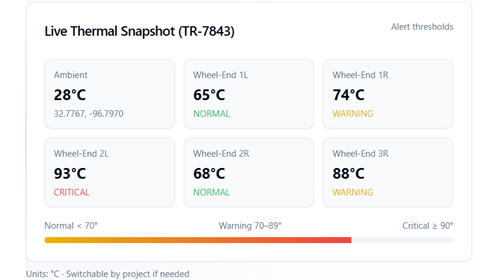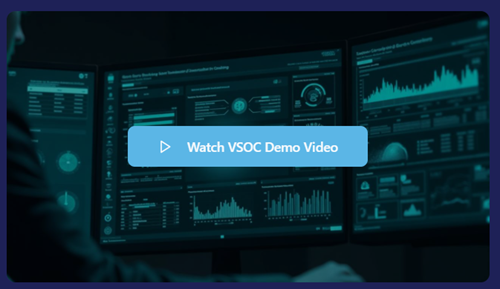
/
June 27, 2022
/
#
Min Read
Calculating Fleet Downtime
Let us begin with the bigger picture: fleet management.
Fleet management?
That’s a big guy sitting in a den, wearing a gray shop coat! He is nursing a cup of tepid coffee and writes down numbers in a worn ledger. Receipts are collected in an overflowing drawer, oil cans stacked in a corner. And he has a loud voice, for truck engines are loud as well.
While this quaint image of a glorious past is fun, it does not really do our fleet manager justice. He probably used a calculator and in fact knew his vehicle and drivers very well—but a lot of the knowledge was rather implicit and most of it not quantifiable. There were many things not much could be done about: vehicles broke down unpredictably, service schedules were approximate, and the inventory of spare parts was based on experience. We have to consider that the dipstick to check the oil was as deep an insight into an engine our guy could get without disassembling it.
The advent of computers and data changed the picture and by the early 2000s most people in the business knew how to use a spreadsheet. Today, sophisticated software is in use, covering many aspects of the entire fleet operation. A lot has been optimized, much is better understood, but some fields remain of concern, one of them being vehicle downtime.
Managing Downtime
Ideally, trucks and cars should roll round the clock, driving revenue. But maintenance has to be done, dock and delivery times have to be considered, drivers need breaks. Still, every hour a vehicle is not in business is an hour lost for business. This is in particular true for unplanned downtime.
Downtime has many causes. What immediately comes to mind are vehicle failures, accidents, and maintenance. Less often thought of are influences like weather, recalls, booted vehicles, business licenses, and traffic. Of all these causes, vehicle failure and maintenance are under direct control of fleet management. To reduce the impact of these factors and thus the resulting downtime can make an important contribution to the bottom line.
However, downtime still is often underestimated. One reason might be that there are different definitions. Is it the duration of a vehicle being in the shop, or is it the total of all time the vehicle is not available for the scheduled business purpose? The second definition would involve more cost points, for example, towing. Do only unscheduled events count as downtime, or are only repairs that are done at outside shops considered? The answers to these questions influence the calculations.
Moreover, certain activities might be classified either as repair, or as maintenance, or under another category. Drivers in turn have their own view, depending on the nature of their employment or relationship with the truck owner. For driver-operators, downtime is particularly tough. Given all these differences, we have developed a Downtime Calculator so our readers can quantify the impact of downtime on their own terms.
The Calculator
Downtime costs are most often broken into two categories, hard costs and soft costs. While spare parts (a typical hard cost) are easily quantifiable, soft costs like loss of goodwill or possibly not acquiring a new customer are more difficult to specify, but may in the end be very expensive indeed.
Please also consider that labor, towing, and diagnosis remain expenses, even when carried out by internal capacities. And now, make your own computations!
What can be Done
Having seen that downtime is a major cost factor on more than one level of business, the obvious question is: What to do about it?
Fortunately, compared to the days of ledgers, calculators, and dipsticks, we are now able to collect real-time and real-world data and make use of them with improved analytics. This enables, for example, true predictive maintenance and in turn the reduction of maintenance cost and downtime.
For these purposes, it is necessary to log data precisely, update software accurately, and manage remote commands exactly. With its award-winning Deep Connected Platform, Sibros provides the following for vehicles of all kinds:
- Use cases that include fleet management and location-based services
- Predictive maintenance and analytics for fleet managers
- Support for 100s of use cases, for example, the study of driving behavior
- Full vehicle diagnosability across all domains (such as powertrain, chassis, body)
- Ease-of-use plotting tool for data analysis and fault investigations
- Grouping of vehicles based on attributes like model, year, software version
This is just a selection of the functions and options Sibros offers, all of which are provided according to the highest certified standards of safety, cybersecurity, and data protection.
Be Proactive About Downtime
The old adage of “If you don’t measure it, you can’t improve it.” today is more true than ever. Shop time is lost time for any fleet, small or large. For our fleet management old-timer from the beginning, service schedules and inventory were better-safe-than-sorry affairs and old vehicles served as emergency resources, with all the extra cost this entailed.
Fleet managers of today are enabled to address specific issues, driver as well as vehicle related. Data can be used for many purposes, for example, to reward good driving or loading, for battery management of electric vehicles, or to optimize oil change intervals of gasoline engines—all with the goals of improved performance, extended lifespan, and increased productivity.
The better data-driven preventive and predictive maintenance is calibrated, the better the fleet runs. Being proactive instead of reactive pays off. Don’t let downtime bring you down. Talk to us.










